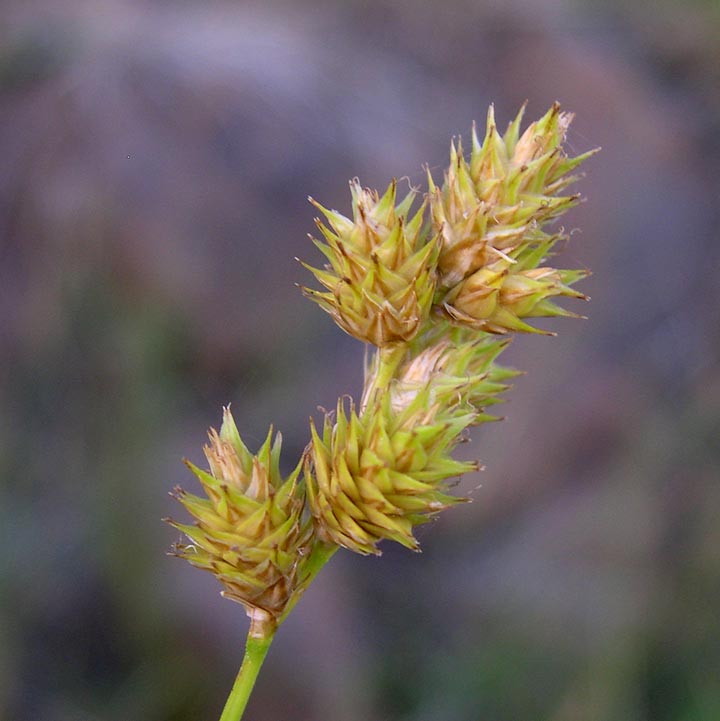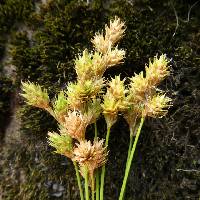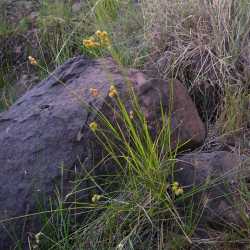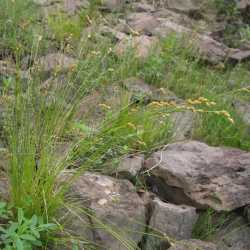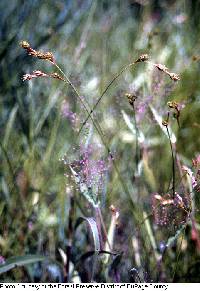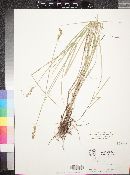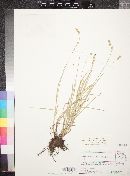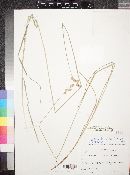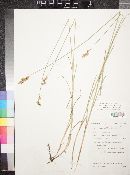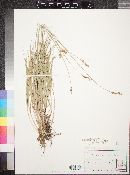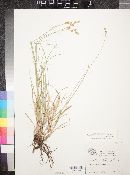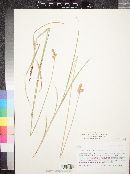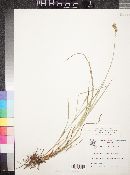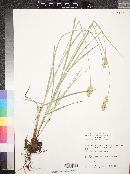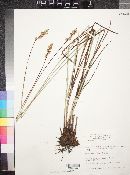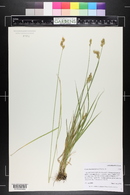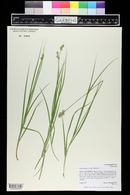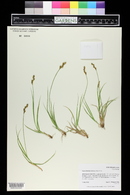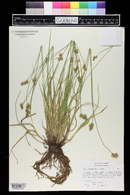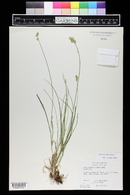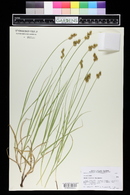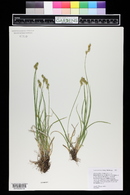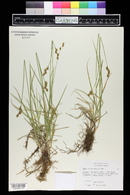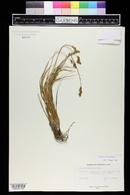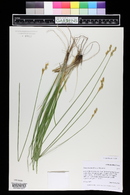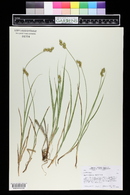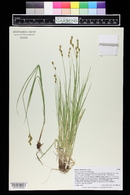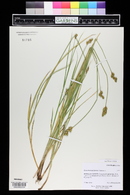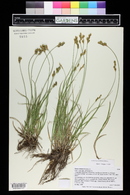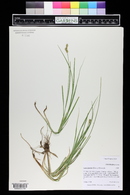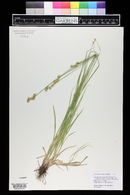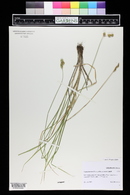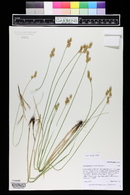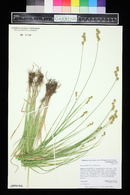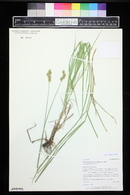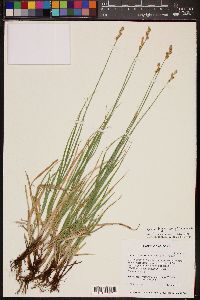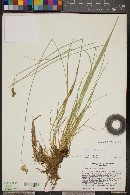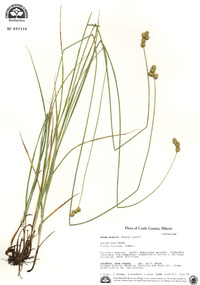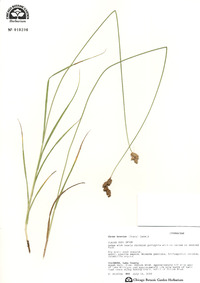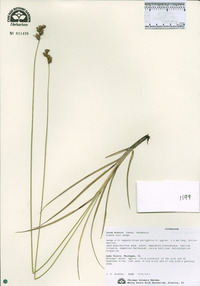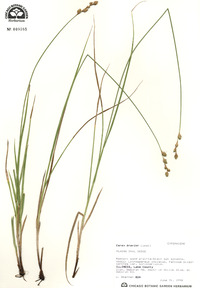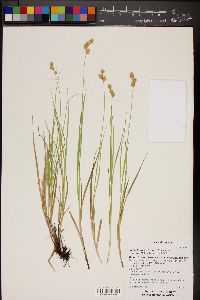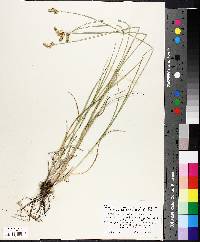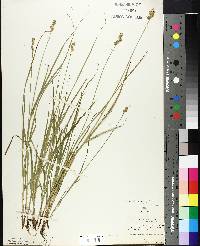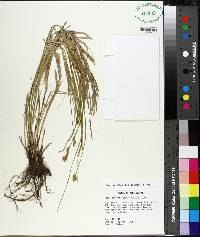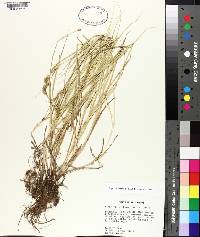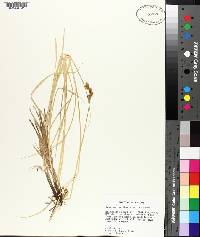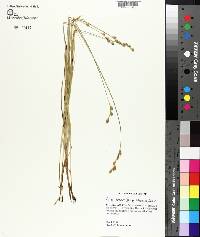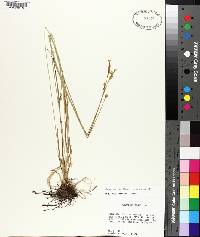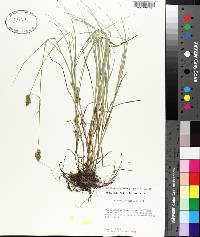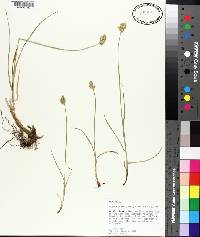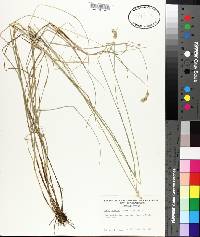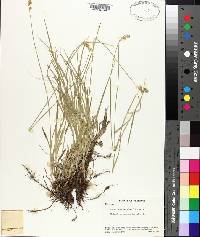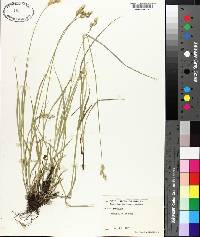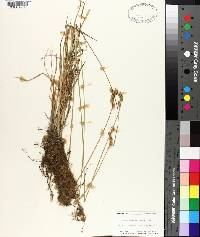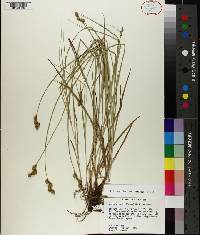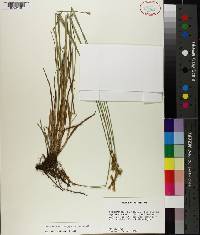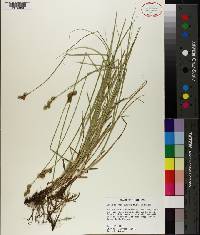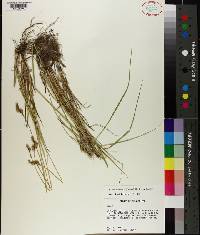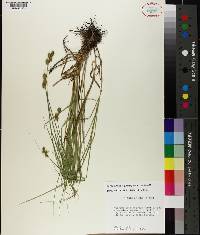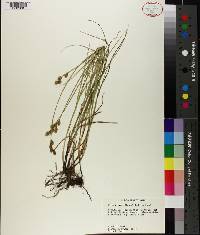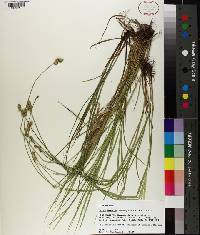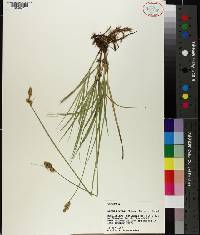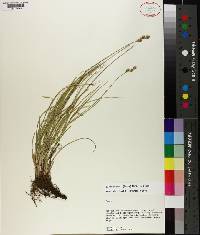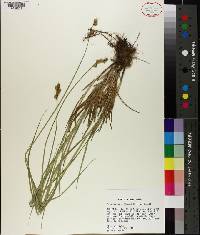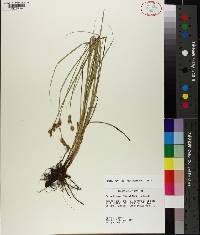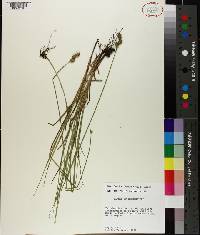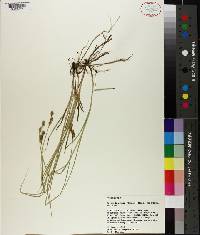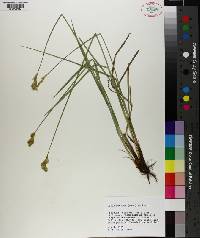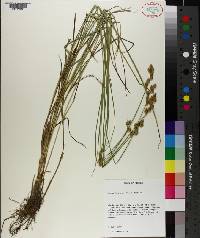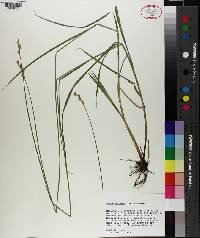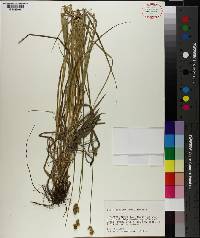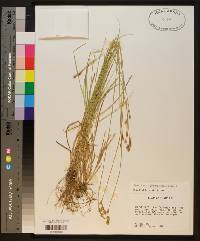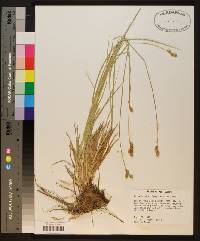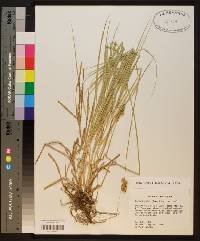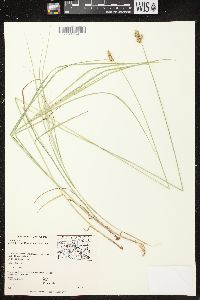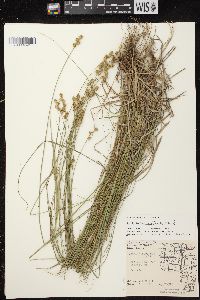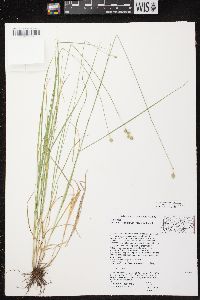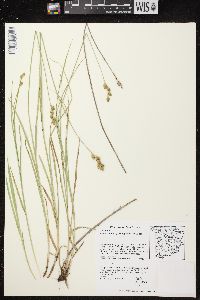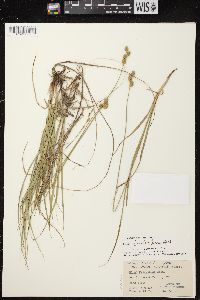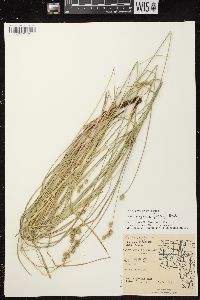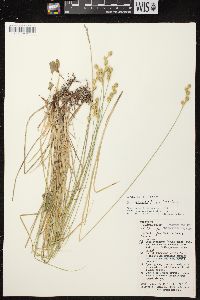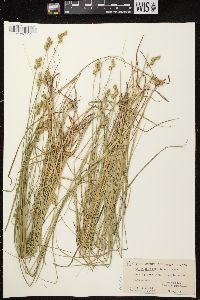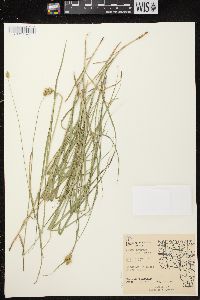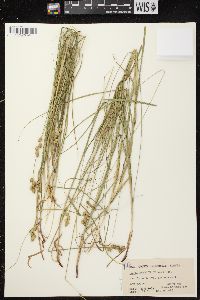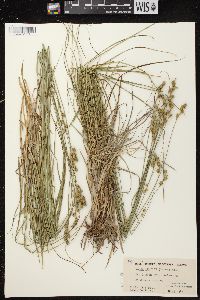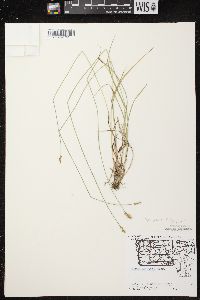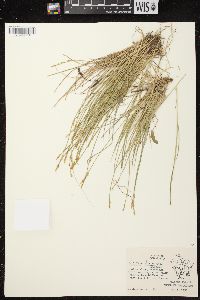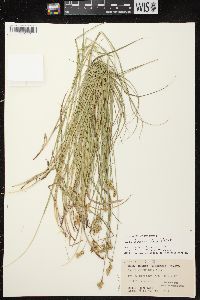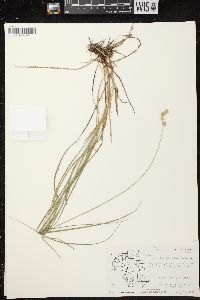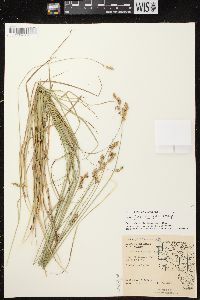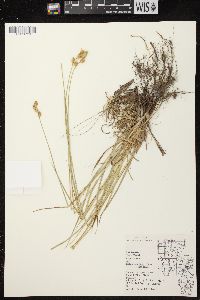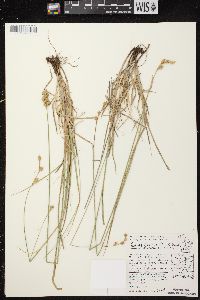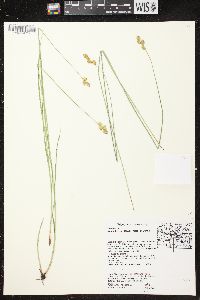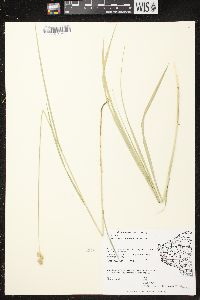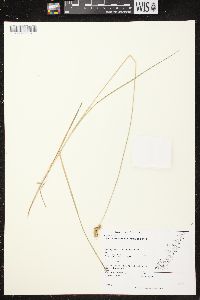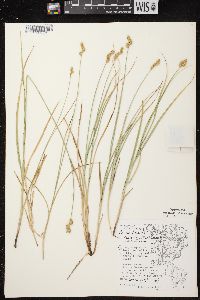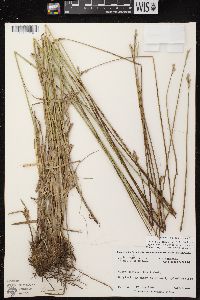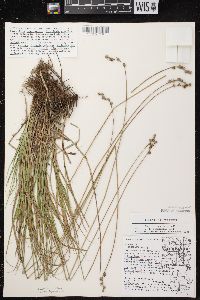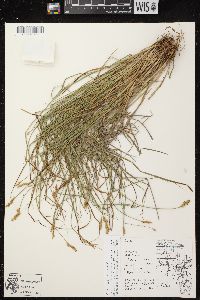Carex brevior
|
|
|
|
Family: Cyperaceae
Short-Beak Sedge, more...shortbeak sedge, brevior sedge, fescue sedge
[Carex festucacea var. brevior (Dewey) Fern.] |
Plants densely cespitose; rhizomes sometimes short-prolonged, appearing elongate in old clumps. Culms 15-120 cm; vegetative culms few, inconspicuous, usually fewer than 15 leaves, not strikingly 3-ranked. Leaves: sheaths adaxially white-hyaline, summits U-shaped or sometimes prolonged to 2 mm beyond collar and rounded, smooth; distal ligules 2.2-3.5 mm; blades 3-5 per fertile culm, 12-30 cm × 1.5-3.5 mm. Inflorescences open, brown, (1.3-)2.5-5(-6.5) cm × 5-18 mm; proximal internode (3-)6-13(-23) mm; 2d internode 2-12 mm; proximal bracts scalelike or bristlelike, shorter than inflorescences. Spikes (3-)4-7, 5-7 on larger culms, distant, distinct, ovoid to ellipsoid, 7-17(-24) × 4-8(-12) mm, base attenuate or rarely rounded, apex acute to rounded; terminal spike usually with conspicuous staminate base. Pistillate scales white-hyaline, tinged reddish brown, usually with whitish, pale gold, or green midstripe, broadly lanceolate to narrowly ovate, 2.6-4.3 mm, as long as to 0.7-0.9 mm shorter than perignyium beaks, narrower than perigynia, margins thin, sometimes involute, apex mostly acute. Perigynia (10-)15-40(-45) per spike, ascending-spreading, green or reddish brown, veinless or faintly and irregularly 1-5-veined adaxially, orbiculate or broadly ovate, plano-convex, (2.6-)3.4-4.8(-5.2) × (2-)2.3-3.2 mm, 0.5-0.6 mm thick, 1.2-1.8 times as long as wide, nearly leathery, margin flat, including wing 0.3-0.8 mm wide, ciliate-serrulate at least distally, smooth; beak pale green or brown at tip, flat, ± ciliate-serrulate, abaxial suture with gold or reddish brown-hyaline margin, distance from beak tip to achene 1.5-2.4 mm. Achenes orbiculate to broadly ovate, 1.5-2.2 × 1.3-1.8 mm, 0.5-0.6 mm thick. 2n = 48, 52, 56, 60, 64, 68. Fruiting early-mid summer. Prairies, meadows, open woods, dry roadbanks, often in calcareous or neutral soils; 0-2700 m; Alta., B.C., Man., Ont., Que., Sask.; Ariz., Ark., Colo., Conn., Del., D.C., Ga., Idaho, Ill., Ind., Iowa, Kans., Ky., Maine, Mass., Mich., Minn., Miss., Mo., Mont., Nebr., N.H., N.J., N.Mex., N.Y., N.C., N.Dak., Ohio, Okla., Pa., R.I., S.Dak., Tenn., Tex., Vt., Va., Wash., W.Va., Wis., Wyo.; Mexico (Tamaulipas). Carex brevior seems to display an unusually broad, aneuploid chromosome series that does not readily correlated with any features of external morphology (P. E. Rothrock and A. A. Reznicek 1998). The chromosome variation may, however, have a geographic relationship. Among the plants observed, the lowest number came from northeast Texas while the highest number (n = 34) came from Manitoba (Á. Löve and D. Löve 1981b). Records of Carex brevior from ruderal habitats east and south of its main range are likely introductions.
Densely tufted, 2-10 dm, aphyllopodic; lvs coarse and firm, 2-4 mm wide, much shorter than the stems; spikes mostly 3-6, gynaecandrous, stout, 6-10(-15) mm, sessile in a moniliform or interrupted to occasionally more congested spike 1.5-5 cm, greenish-stramineous to light-brown; bracts inconspicuous, shorter than the infl; pistillate scales largely hyaline-scarious, with firmer, often greenish midrib, distinctly narrower and tending to be shorter than the perigynia; perigynia crowded, stiffly ascending (the beaks tending to stand out from the body of the spike), 3.2-4.8 נ2.2-3.4 mm, 1.3-1.7 times as long as wide, the body ±strongly flattened, suborbicular, nerved on both sides (C. molesta) or more commonly nearly nerveless ventrally, wing-margined all around and serrulate distally, ±abruptly contracted to the flattened, serrulate beak 0.8-1.5 mm; achene lenticular, 1.6-2.2 נ1.3-1.9 mm; 2n=68. Widespread and abundant, usually in dry soil; Que. to Va., w. to the Pacific. (C. merritt-fernaldii; C. festucacea, misapplied) Gleason, Henry A. & Cronquist, Arthur J. 1991. Manual of vascular plants of northeastern United States and adjacent Canada. lxxv + 910 pp. ©The New York Botanical Garden. All rights reserved. Used by permission. From Flora of Indiana (1940) by Charles C. Deam Common in dry open woods and moist ditches and along railroads and roadsides, especially in the prairie area. ...... Indiana Coefficient of Conservatism: C = 4 Wetland Indicator Status: FAC |

